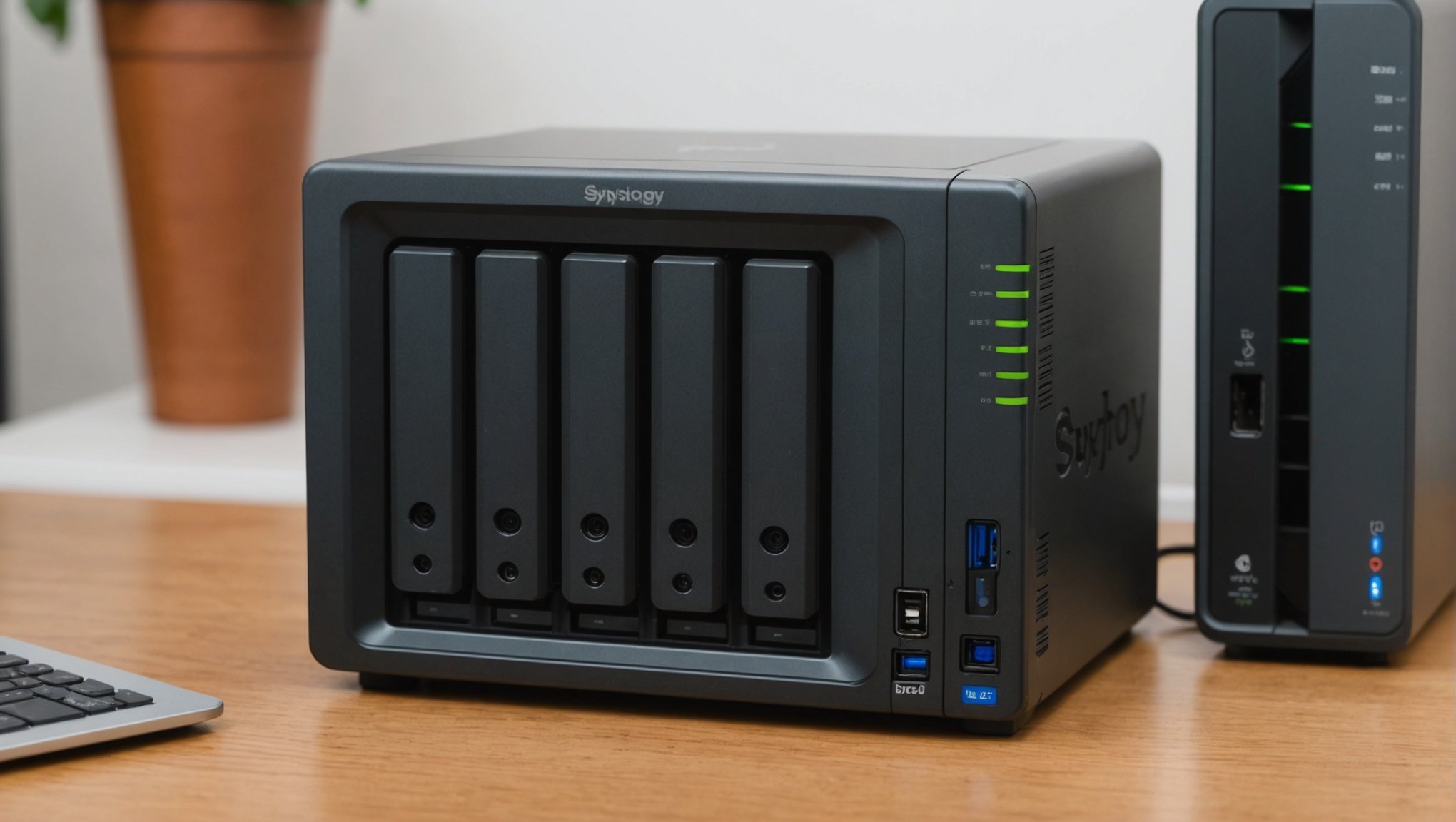Efficient file sharing enhances collaboration while ensuring data security. The Synology DS720+ combined with the Btrfs file system enables users to achieve this balance seamlessly. With advanced features like snapshot technology and efficient storage management, this powerful duo empowers both individuals and teams to share files securely without sacrificing performance. Discover best practices and tips on harnessing their full potential for a more productive workflow. Unlock the benefits of effective file sharing today!
Overview of Synology DS720+ and Btrfs
The Synology DS720+ is a two-bay NAS device designed to cater to both personal and small business needs. With its robust processor and expandable memory, it offers a versatile storage solution. One of its standout features is the integration of the Btrfs file system, which enhances data management and protection.
In parallel : Top Security Tips for Establishing a Safe Remote Desktop Connection with Your Lenovo ThinkCentre M90n
The Btrfs file system is renowned for its advanced capabilities, such as snapshot support and data integrity checks. These features ensure that your data is both secure and easily recoverable. Unlike traditional file systems, Btrfs allows for efficient storage management by enabling users to take snapshots of their data, which can be crucial for preventing data loss. This system also supports self-healing, automatically detecting and repairing corrupted files.
When compared to other file systems like ext4 or NTFS, Btrfs offers superior data protection and flexibility. Ext4 may be more common, but it lacks the advanced snapshot and self-healing features that Btrfs provides. NTFS, primarily used in Windows environments, doesn't offer the same level of integration and efficiency on NAS devices like the Synology DS720+.
Also to see : Step-by-Step Guide to Installing and Configuring a Liquid Cooling System in Your NZXT H710i for Superior Thermal Performance
Overall, the combination of the Synology DS720+ and the Btrfs file system delivers a powerful and reliable storage solution, making it an excellent choice for users seeking enhanced data management capabilities.
Setting Up Your Synology DS720+ for File Sharing
Setting up your Synology DS720+ for file sharing is straightforward, allowing you to maximise its capabilities swiftly. The initial Synology setup involves connecting the NAS to your network and powering it on. Once connected, access the Synology DiskStation Manager (DSM) via a web browser to begin the configuration process.
Configuring Network Settings
To ensure optimal performance, it's crucial to configure your network settings correctly. Start by navigating to the Control Panel in DSM and selecting Network. Here, you can assign a static IP address to your NAS, which stabilises its presence on your network. This step is vital for consistent access and efficient file sharing configuration.
Creating Shared Folders
Creating shared folders is a key part of the NAS installation process. In DSM, navigate to File Station, then click Create, followed by Create New Shared Folder. Provide a name and description for your folder, and choose the appropriate permissions for access. This step-by-step guide simplifies the creation of shared folders, ensuring that your data is organised and accessible.
By following these steps, you can efficiently set up your Synology DS720+ for seamless file sharing, enhancing your data management and accessibility.
Best Practices for Secure File Sharing
In the digital age, file sharing security is paramount for safeguarding sensitive information. Implementing robust user permissions and access controls is essential to ensure that only authorised individuals can access specific files. By carefully assigning and managing these permissions, organisations can significantly reduce the risk of data breaches.
Importance of User Permissions and Access Controls
User permissions are the first line of defence in data protection. By setting precise access levels, you can control who views, edits, or shares files. This prevents unauthorised access and potential data leaks. Regularly reviewing and updating these permissions is crucial to maintain security as user roles evolve.
Implementing Encryption for Sensitive Files
Encryption is a powerful tool for protecting sensitive data during transmission and storage. By encrypting files, you ensure that even if they are intercepted, the information remains unreadable without the correct decryption key. This adds an extra layer of security, particularly for files shared over the internet.
Regular Backups and Their Significance
Regular backups are indispensable for comprehensive data protection. In the event of data loss or corruption, having recent backups ensures that you can quickly restore files to their original state. This practice minimises downtime and maintains data integrity, providing peace of mind in your file sharing endeavours.
Leveraging Btrfs Features for Efficient File Sharing
To fully harness the potential of your Synology DS720+, understanding Btrfs features is crucial. One of the standout capabilities is snapshot technology. Snapshots capture the state of your data at a specific point in time, allowing you to revert to previous versions if needed. This is particularly beneficial for avoiding data loss due to accidental deletions or modifications.
Data Deduplication and Compression
Data deduplication is another impressive feature of Btrfs. It identifies and eliminates duplicate copies of repeating data, optimising storage space. This process ensures that only unique data is stored, reducing unnecessary storage consumption. Coupled with compression, which reduces file sizes, these features significantly enhance storage efficiency on your NAS.
Monitoring and Managing Data Integrity
Ensuring data integrity is paramount, and Btrfs excels in this area. It continuously monitors data, detecting and correcting errors through self-healing mechanisms. This proactive approach prevents data corruption, maintaining the reliability of your files. By leveraging these features, you can enhance file sharing efficiency while safeguarding your data's accuracy and availability.
Step-by-Step Guide to Sharing Files
Navigating the file sharing process on your Synology DS720+ is straightforward, offering multiple Synology sharing options to suit various needs. Whether you're using SMB, AFP, or FTP, each protocol provides distinct advantages for file access.
Sharing Files via SMB, AFP, and FTP
- SMB (Server Message Block): Ideal for Windows environments, SMB allows seamless file sharing and printer services. To enable SMB, go to Control Panel > File Services, and check the SMB option.
- AFP (Apple Filing Protocol): Best for macOS users, AFP supports efficient file transfers. Enable AFP by navigating to the same menu and selecting AFP.
- FTP (File Transfer Protocol): Use FTP for secure file transfers over the internet. Activate it through Control Panel > File Services > FTP.
Using Synology Drive for File Synchronization
Synology Drive offers a unified solution for synchronizing files across devices. Install Synology Drive Client on your computer, connect to your NAS, and select folders for synchronization. This ensures your files are always up-to-date, regardless of location.
Setting Up Shared Links for External Access
For external file access, create shared links. In File Station, right-click the file or folder, select "Share," and generate a link. You can set expiration dates and passwords for added security, ensuring safe external sharing.
Security Measures for File Sharing
Ensuring NAS security is crucial when sharing files. Configuring firewall settings and VPNs is a primary step to secure access. A firewall acts as a barrier, protecting your NAS from unauthorized access by filtering incoming and outgoing traffic. To configure it, access your NAS's control panel, navigate to Security, and enable the firewall. Customise rules to permit only trusted IP addresses.
Configuring Firewalls and VPNs for Secure Access
Using a VPN adds an extra layer of security by encrypting data transmission. This is especially beneficial when accessing your NAS remotely. Set up a VPN by going to the Network section in your control panel and selecting VPN. Follow the instructions to establish a secure connection.
Importance of Regular Software Updates
Regular software updates are vital for maintaining NAS security. Updates often include patches for vulnerabilities, reducing the risk of exploitation. Ensure your NAS is set to automatically check for updates or manually check regularly to keep your system secure.
Utilizing Two-Factor Authentication for Additional Security
Implementing two-factor authentication (2FA) provides an additional security layer. With 2FA, users must provide a second form of identification, like a code sent to their mobile device, when accessing the NAS. Enable 2FA in the Security section of your control panel for enhanced protection.
Troubleshooting Common File Sharing Issues
Encountering problems with file sharing on your Synology DS720+ can be frustrating. However, understanding common issues and their solutions can ease the process. Connectivity issues often arise from network misconfigurations. Ensure your NAS is properly connected to the network and check that the IP settings are correct. If you're facing connectivity problems, restarting your NAS and router may help.
Common Error Messages and Their Meanings
Error messages can provide insight into the issues at hand. For example, "Network Error" may indicate a problem with your connection, while "Permission Denied" suggests insufficient access rights. Carefully read these messages to identify the root cause and apply the appropriate error resolution.
Resources for Further Assistance and Troubleshooting
If issues persist, turn to Synology support for guidance. Their online resources, including forums and knowledge bases, offer valuable troubleshooting tips. Engaging with these platforms can provide solutions tailored to your specific problem. Additionally, consider consulting the Synology community for insights from other users who may have faced similar challenges.
Real-World Use Cases of Synology DS720+
The Synology DS720+ excels in diverse environments, catering to both businesses and home users. Its versatility is evident in various file sharing scenarios.
Business Case Studies
Businesses frequently leverage the DS720+ for its robust file sharing capabilities. For example, a marketing firm might use it to store and share large multimedia files among team members, ensuring seamless collaboration. The device's user experiences highlight its efficiency in handling multiple users accessing files simultaneously without lag, which is crucial for maintaining productivity.
Personal Use Scenarios
Home users benefit from the DS720+ in numerous ways. It serves as a central hub for storing family photos, videos, and documents, allowing for easy access and sharing across devices. A tech-savvy household might use it to stream media content to various rooms, showcasing its capability to manage extensive media libraries.
Advantages Across Sectors
Users across different sectors appreciate the Synology DS720+ for its reliability and ease of use. Educational institutions, for instance, find it invaluable for storing and distributing educational materials. Its ability to handle file sharing scenarios efficiently ensures that students and staff can access resources without interruptions, enhancing the learning experience.
Conclusion and Further Resources
To maximise the potential of your Synology DS720+, exploring additional resources is invaluable. Engaging with learning materials can enhance your understanding and proficiency in managing your NAS device. Recommended reading includes the Synology Knowledge Base, which offers comprehensive guides and FAQs tailored to various user needs. Online courses, such as those found on platforms like Udemy, provide structured learning paths to deepen your knowledge.
Synology Community Forums and Support Pages
Participating in the Synology community is an excellent way to gain insights and solutions from fellow users. The community forums are a treasure trove of shared experiences and practical advice, where you can ask questions and exchange tips. Additionally, Synology's official support pages offer a wealth of information, from troubleshooting guides to software updates, ensuring your NAS operates smoothly.
Final Tips for Optimizing File Sharing
To optimise file sharing, regularly review and update user permissions to maintain security. Utilise Synology's built-in tools, like snapshot technology and data deduplication, to enhance data management. Stay informed by accessing additional resources and engaging with the Synology community, ensuring you're always equipped to handle your file sharing needs efficiently.











